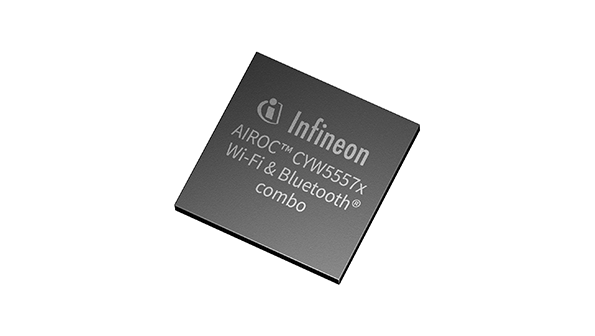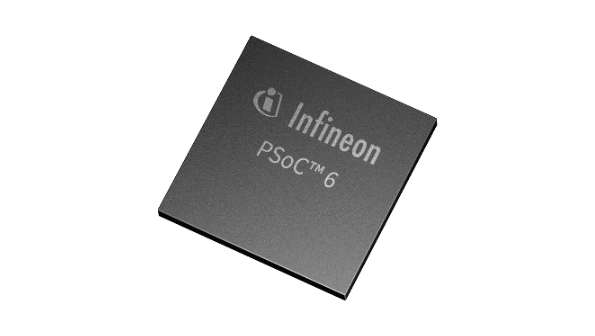Smart inhaler system
User experience and safety considerations as essential drivers for product design considerations
An Inhaler becomes a smart device once it is connected and advanced features are provided. For example, smart inhalers link to an app on the phone or tablet and they can support the user to manage and track the frequency and amount of consumed liquids.
Some smart inhalers have sensors that can work out if you’re in high pollution or high pollen area, some bring up reminders. User experience and safety considerations are essential drivers for product design considerations.
We provide safe, stable, and efficient solutions for secure connectivity via Wi-Fi and Bluetooth, for intuitive user interfaces like touch control, precise sensing technologies, and efficient power supply ICs for USB-PD.
Check the interactive block diagram below on recommended parts for smart inhaler electronics.
Highlight products to smarten up your inhaler
Smart inhaler burn battery power even when they are not being actively used. For that reason, power consumption in standby mode is key. Infineon‘s low-power touchscreen products feature the industry’s lowest standby power: 60 µA to ensure a fast response to touch gestures to wake the wearable device.
The Infineon BLE solution consumes just 5.7 µA average current during a 4-sec connection. Infineon‘s SRAMs have the industry’s lowest standby current: 1.5 µA at 16 Mbit, making them the ideal technology for system memory expansion and buffering data. Our nonvolatile F-RAMs consume 130 µA (2 Mbit, 1 MHz) while writing critical data. The energy consumed for this is >200x better than EEPROM and >3,000x better than NOR flash.
Smart inhaler device enclosures must be small and thin for products to be carried around comfortably. All Infineon products are WLCSP-ready. For example, Infineon‘s Gen5 touchscreen solution is just 3.1 x 3.3 x 0.6 mm. Our BLE solution is just 3.5 x 3.9 x 0.6 mm. Infineon‘s PSoC 4 and PSoC 5LP products reduce board size by integrating analog, digital, and CapSense circuitry.
Smart inhalers need to function under harsh conditions such as rain, snow, or direct sun. Infineon‘s PSoC™ Automotive Multitouch and CapSense solutions feature the industry’s best waterproofing and glove-detection technologies to ensure that medical inhaler products work in all conditions. Infineon‘s nonvolatile F-RAM memories feature nearly infinite data retention and provide the best protection for your critical data through 1014 read/writes vs. 106 of flash and 105 of EEPROM.
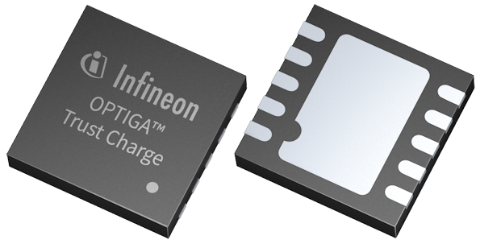
There are many reasons why more and more designers choose wireless charging solutions for their applications. There is no need to plug in a device and no plug compatibility issues. For smart inhalers, consumers use several batteries in parallel to ensure continuous operation. Wireless charging allows us to charge multiple batteries in parallel under harsh conditions (no influence of water/rain; direct sun heat). Seamless charging on-the-go in cars or public places while eliminating tangled cables is another advantage. Learn more about wireless charging enablers of Infineon.
Recommended products for wireless charging:
- Infineon’s OPTIGA™ Trust Charge is a turnkey solution providing secured device authentication for inductive wireless charging. Secured authentication with OPTIGA™ Trust Charge contributes to device and user.
- Microcontroller PSoC 6 for wireless power transfer service in the Power Transmitter Unit (PTU) and Power Receiver Unit (PRU). The inhaler has the role of the PRU. Check the PSoC CreatorTM example project on Power transfer. In this setup, the Wireless Power Transmitter project (PTU) automatically connects to the PRU devices. The PTU (charging socket) uses the WPT Service handle from the advertising packet for quick PRU discovery instead of the classic device discovery procedure. When a connection is established, the PTU automatically initiates a basic information exchange procedure, i.e., sends a read request to the PRU (e.g. smart inhaler) Static Parameter characteristic, a written request to PTU Static Parameter characteristic, enables notification of the Alert characteristic, and enables charging. A read request to PRU Dynamic Parameter characteristic is sent every second. Use the pioneer kit to kick-start your project.
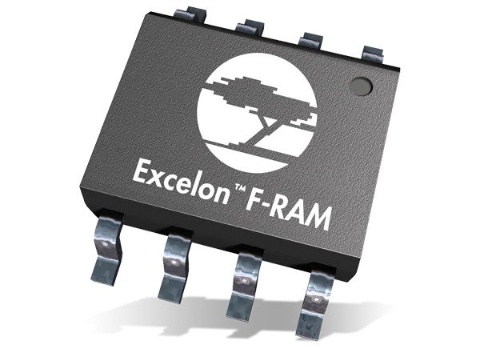
Reliable data logging of a more and more increasing amount of data is used in smart inhalers. This data is capturing for example the usage data of the inhaler or environmental conditions when using the inhaler. It allows the consumer to use and analyze inhaler data to support treatment plans.
Also, treatment plans will be more and more distributed remotely (via the air) from the medical center to the consumers' device.
Designers face the challenges of
- Maximize the battery life of the smart inhalers, by ensuring usage of the lowest energy components.
- Ensure sufficient nonvolatile memory density and write-cycle endurance to log data continuously over the lifetime of the device.
- Ensure use of the smallest-footprint components to deliver the smallest form-factor medical device
MicroPowerTM SRAM and nonvolatile F-RAMTM memories feature the world’s lowest energy needed to buffer and store data in the smallest footprint.
Excelon™ Ferroelectric-RAM (F-RAM): The Lowest-Power Nonvolatile Memory
- Uses 200 times less energy than EEPROM and 3,000 times less energy than NOR Flash.
- Available in densities up-to 8Mb and provides endurance of 1000-trillion write cycles, which can support logging of data every millisecond, for more than 3,000 years.
- Offers small footprint GQFN package
Key Product Features
- Active Current: 0.6 mA @ 8-MHz
- Standby Current: 1 uA
- Hibernate Current: 0.1 uA
- Write Endurance: 1000-trillion write cycles
- Small footprint: ~10mm2 8-pin GQFN package
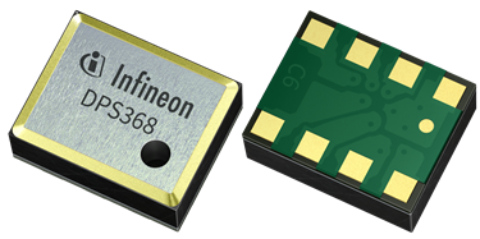
Breath-actuated inhalers and inclusion of dose counters are anticipated to improve asthma control; nebulizers, particularly software-aided systems which can accurately direct lung deposition and total dosing are used in inhaled therapeutics. Ensuring effective inhalation therapy depends on data (usage of an inhaler, environmental conditions, preferences of the consumer) which is mainly generated via sensors. upon many factors that are related to the patient, device, drug, and environment.
Infineon barometric pressure sensors DPS310 offers excellent pressure noise performance and high stability with temperature.
Infineon XENSIV™ DPS368 is our ultra-small waterproof pressure sensor, environmentally protected against water (IPx8), dust & humidity. XENSIVTM DPS368 is a miniaturized digital barometric air pressure sensor with ultra-high precision (±2 cm) and low current consumption, capable of measuring both pressure and temperature. Due to its robust package, it can withstand 50 m underwater for one hour (IPx8). The pressure sensor element is based on a capacitive sensing principle which guarantees high precision during temperature changes. The small package (2.0 x 2.5 x 1.1 mm3) makes the DPS368 ideal for smart inhaler devices, mobile applications, and wearable devices.
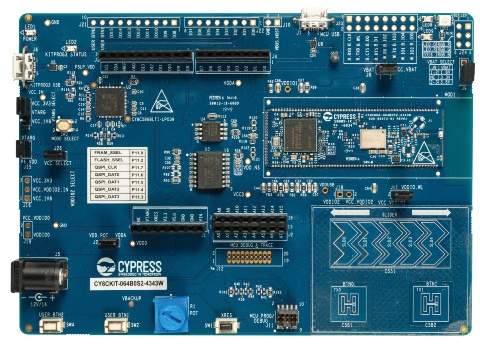
These tiny smart inhalers send and receive notifications from connected devices like smartwatches or mobile phones. Connected software reminded on needed treatment cycles and receives back information on the usage. The data transfer happens while the inhaler monitors and records usage, and additional sensor track environmental data and allows the consumer to share statistics on-the-go with medical staff.
PSoC® 6—Infineon‘s ultra-low-power PSoC 6 MCU architecture offers the processing performance needed by IoT devices like smart inhalers, eliminating the tradeoffs between power and performance. The PSoC 6 MCU contains a dual-core architecture, with both cores on a single chip. It has an Arm® Cortex®-M4 for high-performance tasks, and an Arm Cortex‑M0+ for low-power tasks, and with security built-in, your system is protected.
OPTIGA™ Connect OC1110—Infineon‘s ready-to-connect embedded SIM (eSIM) solution for mobile consumer devices. It is especially suited to extending cellular connectivity to smaller devices like smart inhalers, smartwatches, fitness trackers and other wearables. This turnkey solution securely authenticates the device to the subscribed carrier network of choice.
Smart inhalers contain large amounts of sensitive, personal data. Device manufacturers (OEMs) and e-commerce merchants are reacting by increasing authentication strength.
User authentication via a fingerprint reader
Fingerprint readers are a convenient and secure way to access smart inhalers. Infineon PSoC™ Automotive Multitouch Fingerprint Reader is specifically designed for them. Infineon offers OEMs a custom-size reader that can be flexibly integrated into any mobile device. The solution comes with a complete software stack, including FIDO components, that enables quick integration into any Android® mobile device. Extensive testing and usability tools are available to rapidly fine-tune an OEM’s custom sensor, decreasing time-to-market. The PSoC™ Automotive Multitouch Fingerprint Reader’s superior fingerprint imaging and pattern-matching performance offer everything needed to efficiently design and integrate user authentication into mobile devices. Reach us at ttfingerprint@cypress.com
PSoC™ Automotive Multitouch and CapSense® solutions provide the industry’s lowest-power, smallest touchscreen solutions with the highest signal-to-noise ratio (SNR) and best waterproofing for natural user interfaces that simplify the sending, receiving and control of notifications.

